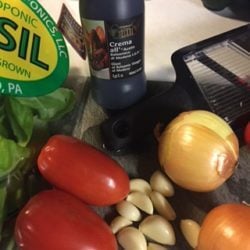After coming off the holidays, many people step on the scale and realize they have a little bit of work to do this coming year if they want to get or stay on track with their health goals. I for one ate a bit more sugar than I normally do over the holidays, so I’m ready to get back in line.
I thought it would be interesting to have a conversation with a Registered Dietician about how to make realistic goals for better health in 2017. Tara Phillips and I worked together at Weaver’s Orchard a few years ago and now she has completed her Nutritional Science studies and has quite a few letters behind her name to verify her credentials. So let’s chat with Tara.
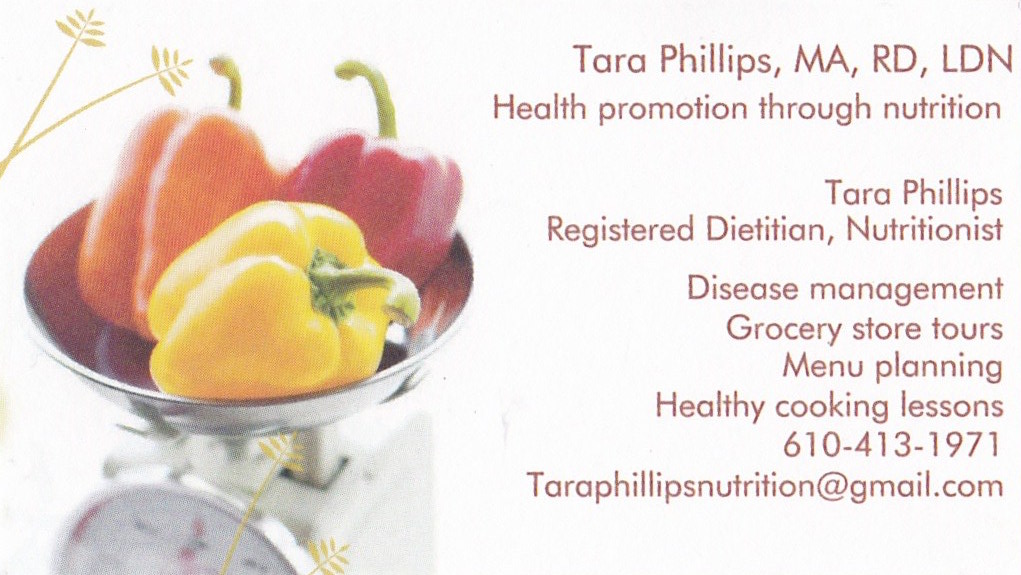
Can you tell us a bit about your education?
Around the time I was starting kindergarten, I told my own mother she wasn’t eating enough vegetables. That’s just one example of my lifelong passion for nutrition, so it seemed natural that I would major in nutritional sciences. I’ve now earned a lot of letters behind my name—Registered Dietitian (R.D.) and Licensed Dietitian Nutritionist (L.D.N.).—and worked hard to gain valuable knowledge and experience to become the professional I am today. Each day I continue to learn and grow, evolving with new nutrition trends and exciting new foods.
What do you do now?
Now my nutritional consulting business, Tara Phillips Nutrition, helps clients use nutrition for better health and quality of life, whether through meal planning, daily food menus, disease prevention through nutrition, grocery shopping with label reading, or weight loss. As a clinical dietitian, I also work with individuals in their homes, or in acute hospital or long-term care settings.

What are some common goals people have for the new year? How can you help them achieve these goals?
Many people look to reach new health goals. Usually weight loss is a big one. I like to encourage my clients to seek health instead of a certain number on the scale. Usually seeking “healthy” instead of “weight loss” as main objective makes it easier to stay motivated, and typically weight loss follows anyhow.
If weight loss is a goal, what is a realistic time frame for losing a total goal of either 10, 20, 30, 40 lbs?
One to two pounds per week is a healthy goal that’s more effective to maintain long term.
One pound of body weight equals 3500 calories. Reduce your caloric intake by 500 calories a day (500 x 7 days = 3500), and you should see the one-pound weight loss. Of course there are numerous variables to take into account such as age, gender, activity level and quality of the diet.
Our bodies are made so perfectly that they seek to keep our body weight the same, so we have to push ourselves to make changes. Plateaus will happen. Seeking non-scale victories is important, i.e., clothes are fitting better, having more energy, feeling better. Achieving non-scale victories will motivate you to keep moving toward your goals, instead of getting frustrated and giving up.
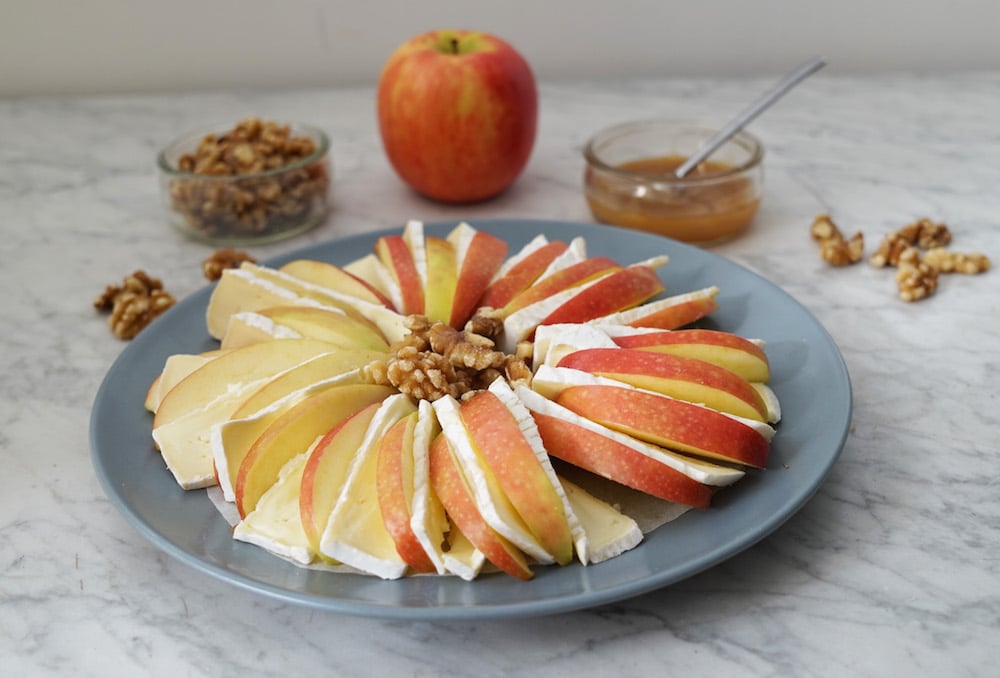
Do you recommend specific diets, recipes or weekly meal plans to your clients?
My overall view on “diets” is to balance all the food groups, remembering that portions are very important. Most importantly, a balanced diet should be one that you can live by for the rest of your life, not just a few weeks to lose weight.
It’s important to have colorful balance with lots of beautiful fruits and vegetables as the majority of the diet, along with plant-based proteins. I recommend including the following:
- Fruits or vegetables (locally grown when available) – making up half of every meal
- Beans, nuts & nut butters
- Lean protein such as chicken, fish & turkey
- Red meat only in moderation, if desired
- Whole wheat options, pasta, brown rice, quinoa, barley & rye
- Dairy items such as milk, yogurt & cheese
When I help clients, I try to find specific foods they like and healthy recipes they will be able to use often to create this balance. Each person is so different in food preferences, and food is so very personal. What works for one person may not work for another. That is why if you are struggling to find balance, seeking a nutrition expert— a Registered Dietitian— is so important.
Do you recommend people take any vitamins or supplements, or can most of these be found in foods?
The biggest vitamin we lack, especially in the northeastern part of America, is Vitamin D, without a doubt. Vitamin D plays an integral part of bone density and studies have shown long-term deficiency of Vitamin D to be linked with several types of cancer.

How can you get Vitamin D?
It’s in food—mainly fatty fish such as tuna, mackerel, salmon, egg yolk, cheese and beef liver—but our primary way to get Vitamin D is through sunlight so our bodies can make our own. Doctors can easily test Vitamin D levels through blood work and can recommend supplements if needed.
Low-carb diets are popular. Is there such a thing as too much protein when on a low-carb diet?
I do not recommend low carb diets. As Americans, we eat too much protein in our ordinary diets, so when we start altering to have even lower carbohydrate intakes, we increase this even more, making our kidneys work too hard to digest the protein. (Again, this is for the average person; there are definitely individuals who require more protein in their diets.)
So we shouldn’t automatically consider carbs “bad”?
Carbohydrates are our main fuel source. We need carbohydrates to function every day; however, we should choose our carbohydrates wisely. Many people do overeat carbohydrates— especially white refined ones such as white bread, pasta, white rice, or bakery items such as cakes and cookies. But if we consciously choose whole grain varieties and fruits and vegetables as our main carbohydrates, there is no reason to give up bread or pasta, etc.
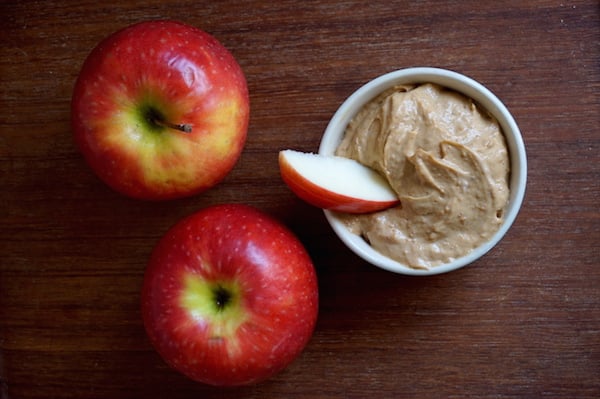
What are some good healthy snacks?
Healthy snacks are ones that come from more than one food group. For example, an apple is a great choice, but an apple with some nut butter is even better because there is balance between carbohydrates and protein, and you’re adding several different vitamins and minerals.
Here’s some ideas for healthy 2-food-group snacks:
- apple and nut butter
- hummus and raw vegetable slices
- a handful of raw almonds with a banana
- whole wheat bread toast with all-natural peanut butter
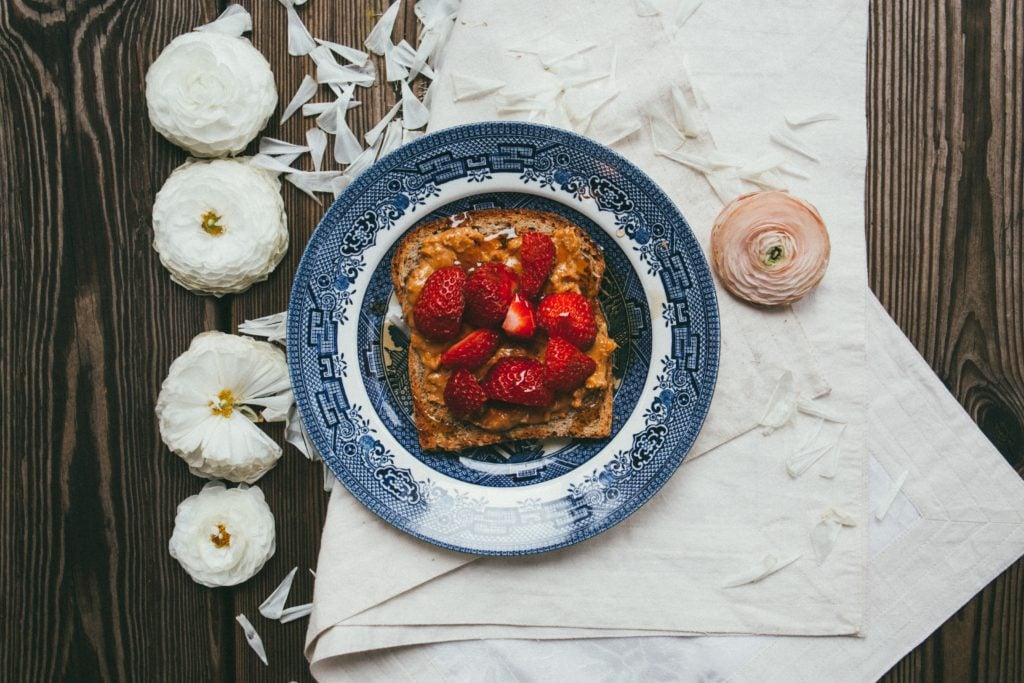
Any other suggestions or tips?
Another great tip is to focus on portion control by eating every 2-3 hours. A good way to structure the day is 3 meals + 3 balanced snacks.
- Breakfast + Mid morning snack
- Lunch + Afternoon snack
- Dinner + Evening snack
Snacks do not need to be extra wasted calories. They can be balanced, healthy choices that add nutritional value to the day. By not allowing yourself to get over-hungry, you are enabling yourself to make smart, nutritious decisions when you eat and are able to control your portions better.
Also, by planning your week of meals and snacks, you can stay on track. If you need to deviate from that and grab something quick to eat, choose the best option you can. Make sure it involves fruit and vegetables as a major part of the meal. Choose local ingredients first, choose the least processed to avoid additives, looking for whole ingredients.
Lastly, enjoy your food. It is okay to eat cake at a birthday party or have a dinner out with your friends, just plan and make the rest of the week count so you can enjoy these treats without the guilt.
Tara left us with some delicious recipes too. Be sure to try them out!
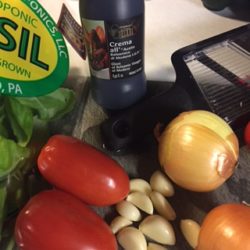
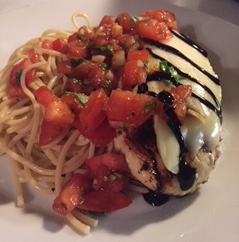
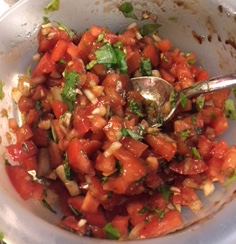
Bruschetta-Topped Chicken with Balsamic Glaze
- Category: Main Dish
Ingredients
[CHICKEN]
- 2 large chicken breasts
- ¼ cup balsamic vinegar
- ½ Tbsp olive oil
- ¼ tsp minced garlic
- a pinch salt & pepper
- Optional cooked pasta
- Optional grilled zucchini
[BRUSCHETTA TOPPING]
- 4 medium roma tomatoes
- ½ medium sweet onion (Vidalia)
- 1 tsp minced garlic
- 2 Tbsp balsamic vinegar glaze (available at Weaver’s Orchard)
- 1 Tbsp olive oil
- salt & pepper, to taste
- 1 8-oz ball fresh mozzarella (available at Weaver’s Orchard)
Instructions
- Trim the excess fat from the chicken breasts and cut each piece into two. Cover the chicken with plastic wrap and pound the pieces down to one inch in thickness (use a rolling pin or heavy pan to pound).
- Place the chicken pieces in a container or zip-top bag along with ¼ cup balsamic vinegar, ½ Tbsp olive oil, ¼ tsp minced garlic (or one clove if using fresh), and a healthy pinch of salt and pepper. Mix everything around to make sure the chicken is coated in the marinade.
- Refrigerate until ready to cook.
- Prepare the bruschetta topping. Finely dice the onion and tomatoes.
- Combine them in a bowl with the minced garlic, balsamic vinegar glaze,and olive oil. Stir well, taste, and add salt and pepper to your liking.
- Grill the chicken until cooked through. Turn the oven on to broil and adjust the rack so it is about 6 inches below the heating element.
- Place the grilled chicken pieces on a baking sheet covered with foil. Top each piece of chicken with about ¼ cup of the tomato bruschetta topping and 1 thick slice of fresh cheese. Add balsamic glaze drizzle on top of the chicken.
- Optional pasta mixed with leftover bruschetta and olive oil to add as a side item. I also like to grill some zucchini to add more vegetables to the meal.
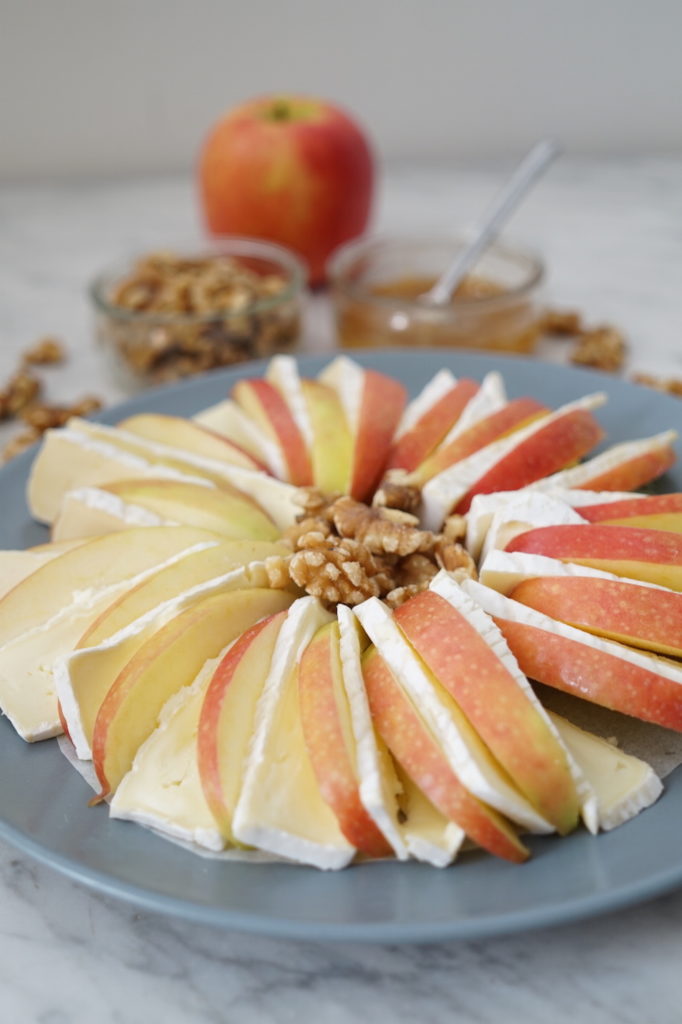
Brie with Apples and Honey
A sweet delightful appetizer!
- Yield: 4 servings 1x
Ingredients
- 2 apples, sliced (Honeycrisp, Fuji or Pink Lady®)
- 8 oz Brie
- 2–3 Tablespoons honey (I love the Orange Blossom Raw Honey from the Weaver’s Orchard)
- Walnuts (optional)
Instructions
- Slice the apples. Slice the brie a similar size to the apple, then drizzle with honey.
- Or if you prefer, you can place brie on baking sheet, then top with honey and walnuts and bake at 350F for 15 minutes. Slice brie and serve with apple slices. A treat guests will be impressed with
- and enjoy!
Be sure to check out Tara’s Facebook page, Nutrition for Life by Tara, packed with great nutrition tips, other recipes and contact information.

